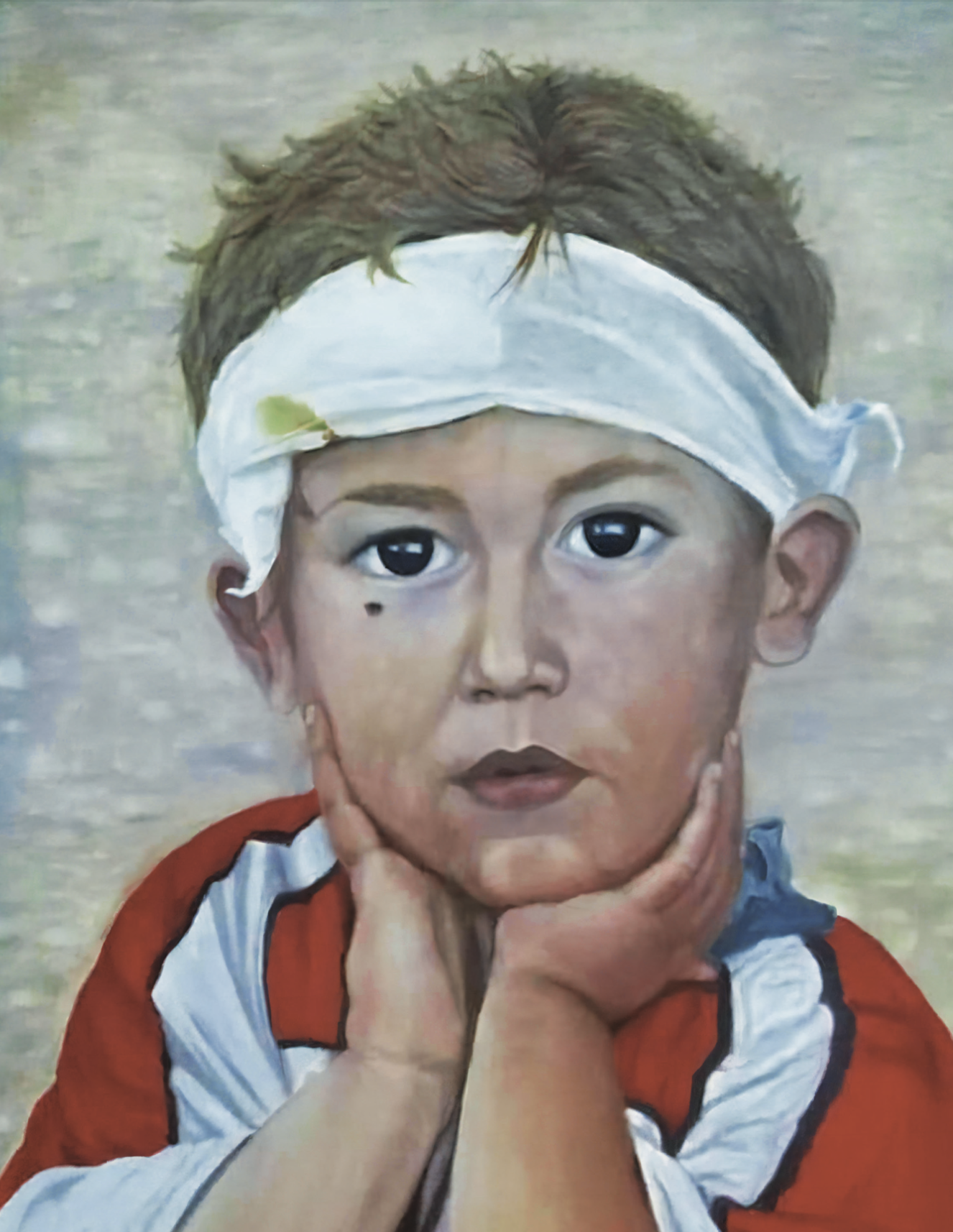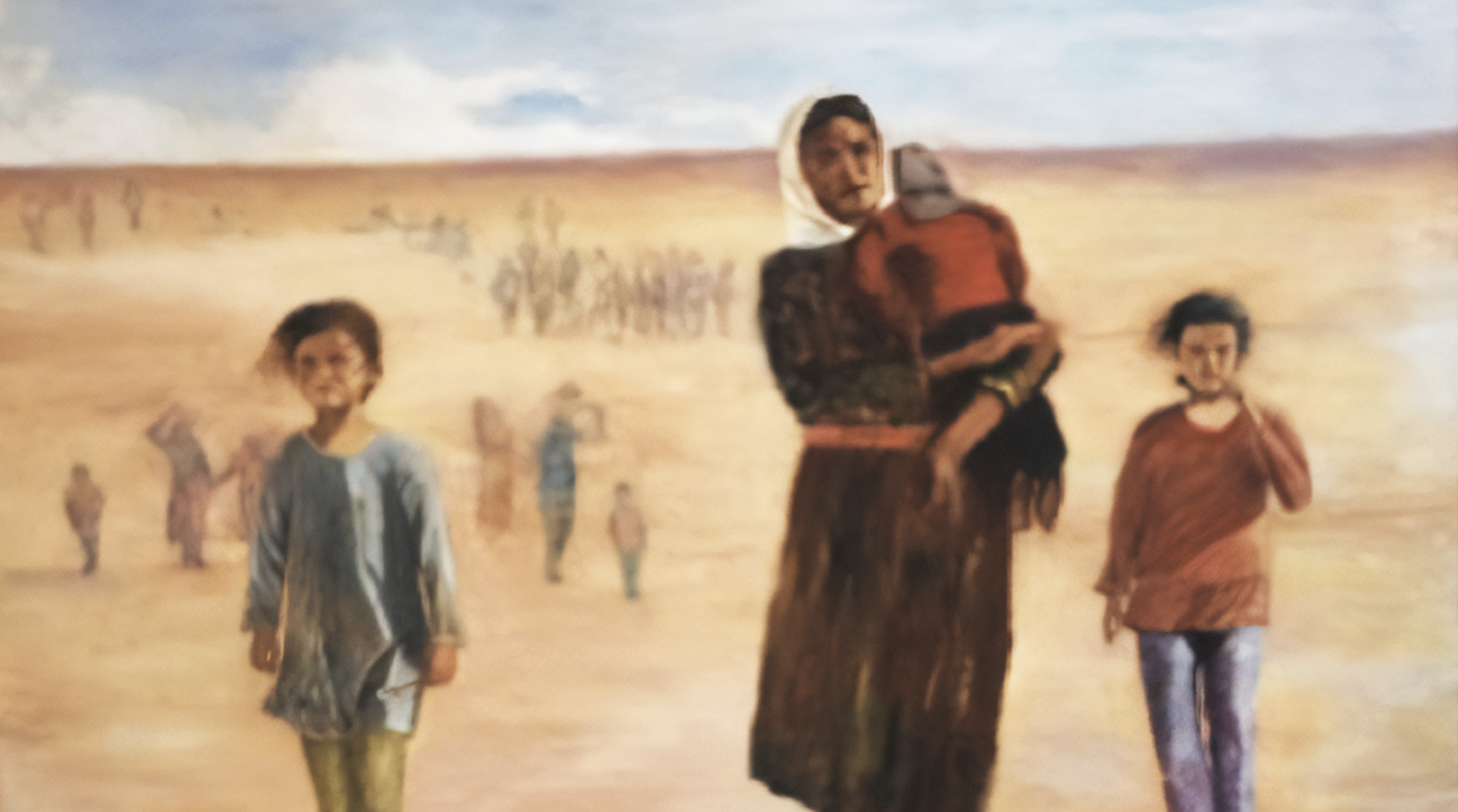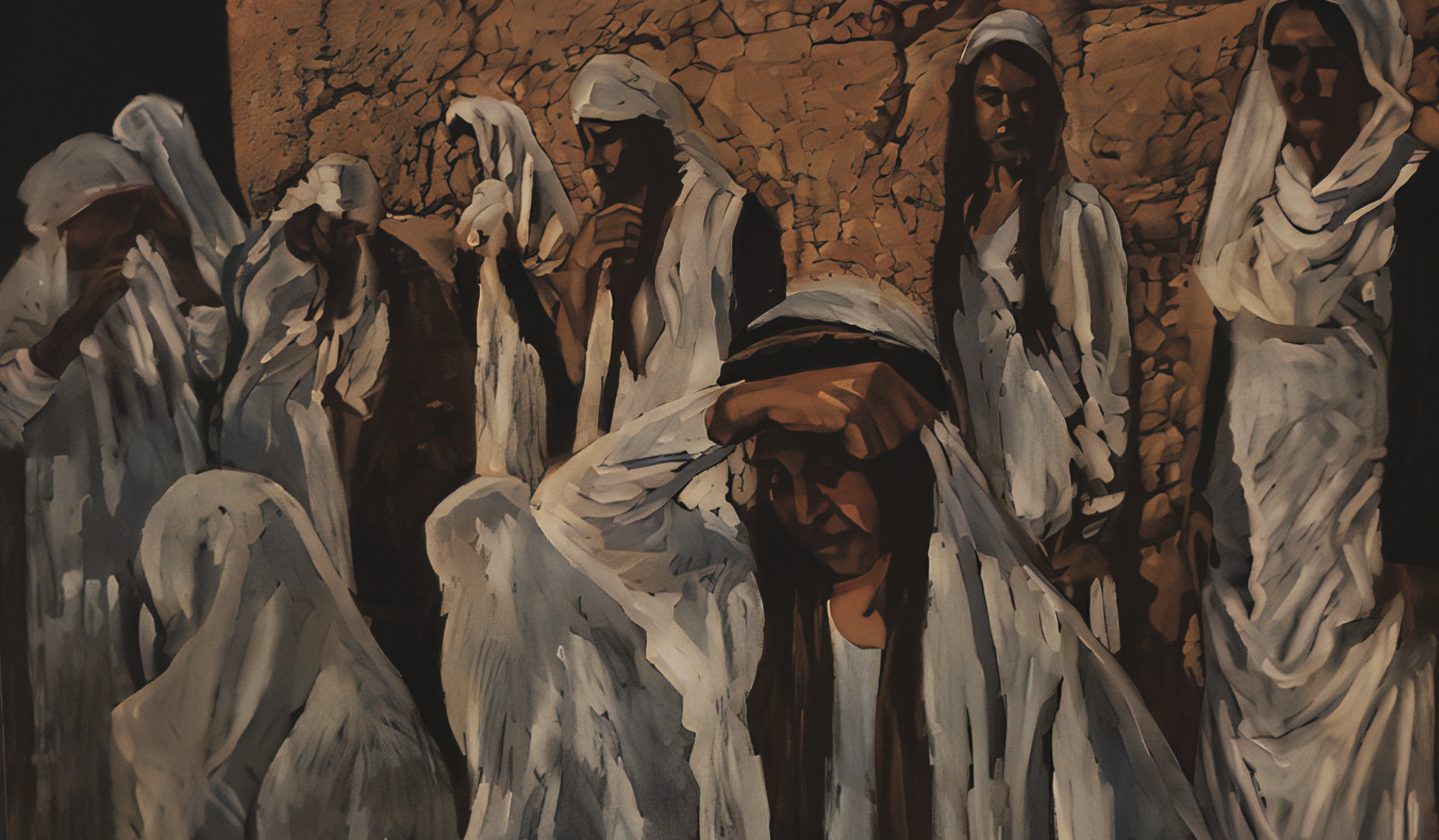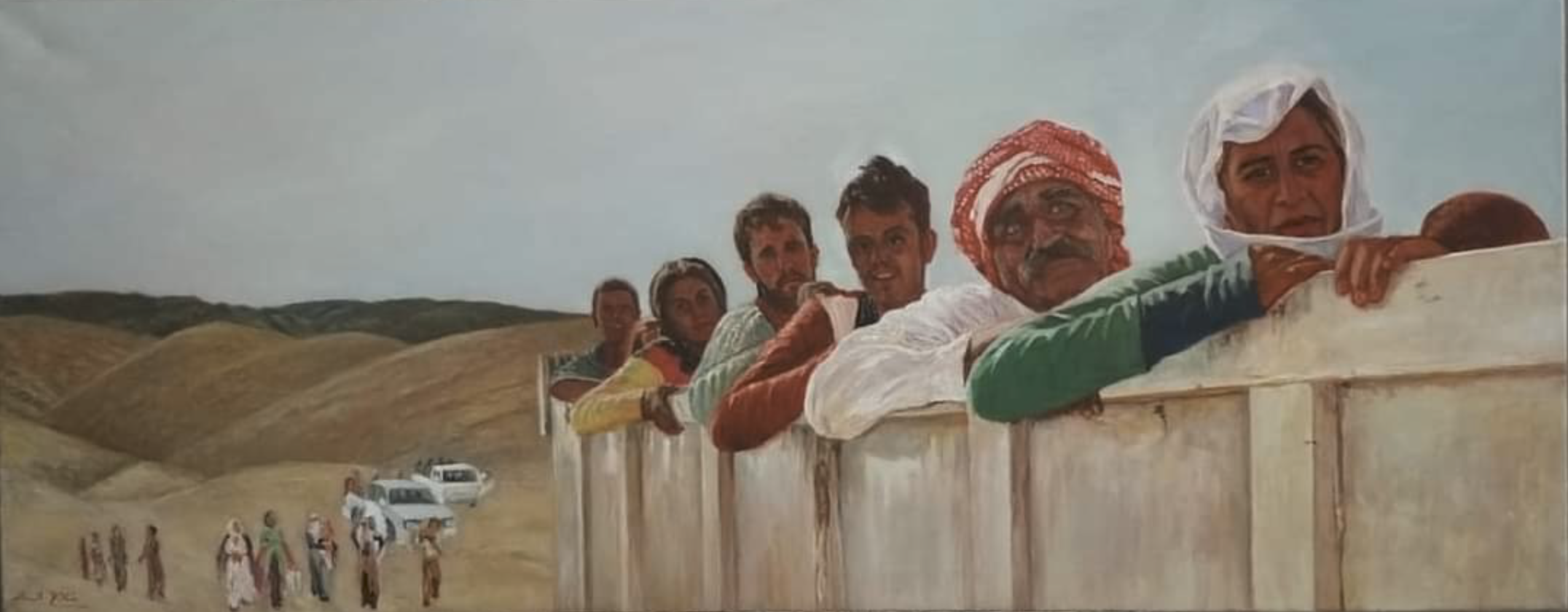In 1993, in the middle of all the chaos in Iraq, a Yezidi boy in primary school finds comfort in watching cartoons on TV. Whenever the power goes out – which happens a lot – he misses those bright, lively characters. Even in the dark, he can picture them in his mind, colorful and spirited. He grabs his pencil and starts sketching, determined to keep them alive. That’s how Falah’s journey began, turning the gloom around him into something brighter with his imagination.
Although Falah survived the 2014 Yezidi genocide, he was deeply hurt by losing so many people he cared about. Again, he found peace in his art. Painting helped him fend off the sadness, telling his own story of strength and bravery with every brushstroke.
Co-founding a charity in 2013, Falah showed solidarity during the 2014 Yezidi genocide by using art to convey survival stories. His paintings now grace international exhibitions, while he teaches his fellow refugees art, computer skills, and English. As a translator for the nonprofit Habibi International, Falah continues his commitment to community enrichment. Based in Germany, he works to spread his humanitarian message despite the many challenges he has faced.

Mass Escape
The painting The Mass Escape portrays the poignant journey of the Yezidi people escaping from ISIS. Central to the image is a Yezidi mother, cradling her baby, walking alongside her two daughters through a landscape filled with uncertainty, where swirling dust obscures their path.
In the distance, a crowd of fellow Yezidis moves onward, their urgent need evident. High above them, a fragile boundary separates the earth from the sky, subtly hinting at their precarious position. Each step they take resonates with the weight of history and the uncertainty of their future, teetering on the brink of the unknown.

Window of Hope
Through the Window of Hope, a Yezidi boy stands poised before an open window, whose glass once shielded him from the outside world but is now replaced by mere curtains fluttering in the wind. Behind him looms the dark interior of an unfinished building, a skeletal testament to a world in flux, its raw construction mirroring the uncertain landscape of post-war existence.
In the boy’s posture, the viewer glimpses the weight of the world upon his young shoulders. With elbows resting on the windowsill and hands clasped in quiet contemplation, he gazes outward with an intensity that belies his tender years. His eyes, windows to the soul, peer into the abyss of the future, seeking answers amid the chaos and wreckage of the past.
At this precise moment, we see more than just a boy. What we see is the embodiment of strength within the wreckage.

Yezidi Girls in Lalish
In Yezidi Girls In Lalish, the figures adorned in white garments and delicate scarves serve as vessels of spirituality, while the weathered, earth-toned walls of the ancient temple evoke a profound sense of history and ancestral connection.
Their faces, bathed in the soft glow of sunlight, reflect not only the interplay of light and shadow, but also a profound bond with the essence of Yezidi culture. This intricate dance between light and form transforms the canvas into a sacred shrine, where the unity between the people and their homeland is celebrated.
The painting tells a story of symbiosis. The contours of their features echo through the rolling hills and valleys they call home, weaving together a narrative of identity inseparable from the land itself.

Falah’s Resilient Brushstrokes
In a world often numbed by indifference, Falah’s art emerges as a vital testament to resilience and endurance. Through his masterful strokes, he eloquently captures the unyielding spirit of the Yezidi community, underscoring the fact that, despite attempts to erase their existence and strip them of their dignity, their imagination remains undefeated.
In depicting Yezidi women and children, Falah’s work poignantly underscores the absence of men lost to genocide, while the haunting sorrow in their eyes echoes the harrowing ordeals endured by countless women subjected to enslavement, violence, and exploitation at the hands of adversaries.
Through his artistry, Falah not only encapsulates the suffering and fortitude of his people, but also amplifies their voices, ensuring that their narratives endure, neither forgotten nor silenced.

Sarwa Azeez is Kurdish poet, researcher, and translator. Her work has appeared in many publications such as Parentheses Journal, Writing for A Woman’s Voice, Notre Dame Literary, The International Journal of Genocide Studies and Prevention, Wingless Dreamer and elsewhere.